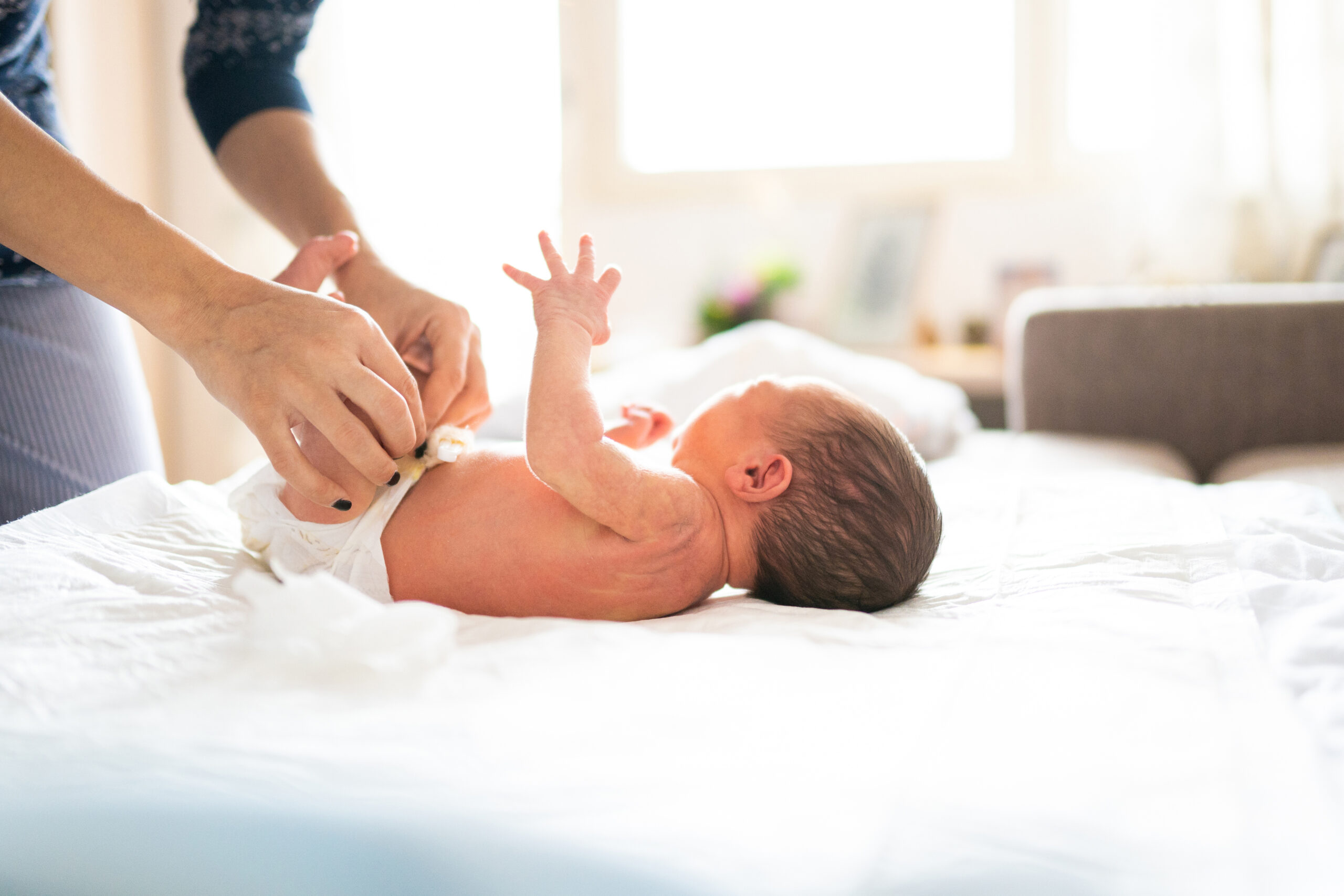
Although candidal diaper rash is a very common condition for babies to encounter, that doesn’t make it any easier for the baby — or parents — to deal with. Those little red bumps pack a big punch by causing scaly and tender skin, making for an uncomfortable time for your child. There are a few causes of candidal diaper rash, but it mainly comes from a warm, moist environment, infrequent diaper changes, or a compromised immune system. Thankfully, candidal diaper rash, also known as diaper dermatitis, is easily treatable.
We spoke to two amazing pediatricians who help us navigate diaper rash causes and treatments. They also give their take on using baby powder. Here’s how to get your baby back to a better bottom.
What is candidal diaper rash?

With diaper changes happening by the hour, it’s understandable how, at some point, most babies experience chapped, raw skin in their diaper area. “If that raw skin becomes secondarily infected with a yeast called Candida albicans, it can worsen the rash,” explains Dr. Tiffany Jumaily.
According to Dr. Leann Poston, a professional contributor to Invigor Medical, candidal is a yeast that is normally found on the skin, inside the mouth, in the intestinal tract, and in the genital region. “Microbes live over the surface and inside the body, making up your microbiome. Your immune system and other microbes keep them in check,” she notes.
When we think of yeast-type infections, we tend to think of women, so how do babies become infected? “Occasionally, when the conditions are right, such as a warm, moist environment, or when the skin surface is damaged, candidal will overgrow and cause symptoms. An overgrowth of candida is called a yeast infection or candidiasis,” Poston says.
She continues: “Factors such as being in a hot, humid environment, infrequent diaper changes, taking antibiotics, and having a compromised immune system can increase the risk of yeast infections in the diaper area.”
Key ages for candidal diaper rash mean staying vigilant.

Candidal diaper rash is fairly common and typically develops in young infants. Most children will have at least one episode of diaper rash before they are toilet trained. “Candida yeast has been isolated in 70 to 92% of all diaper rashes in infants,” Jumailiy reveals.
“Diaper rash peaks between 7 to 12 months of age, then begins to decrease. Risk factors for developing diaper rash include wetness in the diaper, friction, urine, or feces. Severe diaper rash can also come from diarrhea (which increases the risk of candida three-fold) and use of antibiotics."
What is thrush?

When candida overgrows in the mouth, usually in infants and those with a compromised immune system, it’s called thrush.
“Toddlers can get thrush, but it is usually after they have taken antibiotics,” Poston says. ”Antibiotics can wipe out ‘good’ bacteria that are keeping the growth of candida in check. When candida overgrows in the mouth, you may notice white or yellow curdy looking patches over the gums, inside of the cheeks, and roof of the mouth.”
Parents should be warned that though these patches look easy to remove, they should not be scraped off.
“These patches are painful,” adds Poston. She says parents should look out for signs such as their child drooling or having a decreased appetite due to mouth pain. Thrush in children older than 2 or 3 may also be a sign of diabetes or a compromised immune system.
Learn how to spot candidal diaper rash.

Candidal diaper rash is characterized by bright red areas of skin, often between skin folds, with scattered red dots, says Jumaily, who tells us that it typically can be diagnosed by a pediatrician on examination.
Candidal can also look like a red rash with smaller areas of rash surrounded by a raised border and is typically symmetrical in distribution. “The rash may extend to the armpits and crease of the neck (other warm, moist areas). Your child may complain that the rash itches or burns,” Poston explains.
How do you treat candidal diaper rash?

Candidal diaper rashes are best treated with an antifungal agent.
Jumaily says that depending on the severity of infection, sometimes your pediatrician will prescribe a topical antifungal to apply directly to the area, whereas other times your child might need an oral antifungal medication.
It’s also important to improve the skin barrier and remove underlying predisposing factors. After it’s established that your baby has candidal, Jumaily recommends changing wet or soiled diapers quickly.
“It is important to wash the skin with warm water and baby soap after each soiled diaper to remove any trace bacteria and feces," she explains. "It is also more comfortable than using wipes to the tender, raw skin.” If possible, she recommends allowing your infant to spend some time without a diaper, so the skin can be free to the air.
The doctors both agree that using baby powder to treat candidal is a bad idea. “The powder is easy to be aerosolized and we do not want it inhaled into the lungs,” Jumaily explains.
With treatment, candidal diaper rash or thrush usually goes away in about two weeks. Poston recommends that parents boil pacifiers and bottle nipples to ensure that a recurrent infection does not happen.
When should you call your pediatrician?

If it’s after treatment and it seems as if your baby’s condition is not improving, it’s advised that you reach out to your pediatrician.
“Call your pediatrician if diaper rash appears to be worsening over time, if the skin becomes red or with scattered red dots, or if your baby develops any systemic symptoms — such as fever or loss of appetite,” Jumaily recommends.
Also keep track of your child’s infections and make sure to call your pediatrician if “candidal infections are recurrent or occur after the age of 3,” Poston adds.






